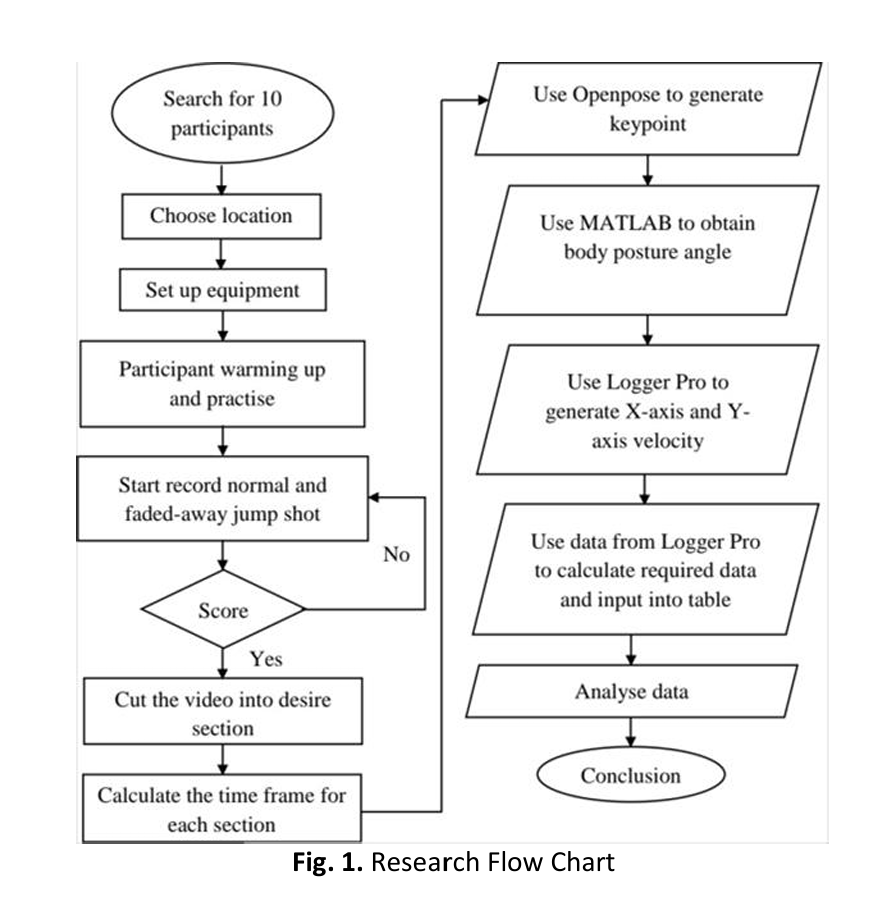Biomechanics Analysis of Normal Jump Shot and Fade-Away Jump Shot in Basketball
DOI:
https://doi.org/10.37934/araset.44.2.102111Keywords:
Basketball, Normal jump shot, Fade-away jump shot, Release angle, OpenposeAbstract
Basketball players normally use jump shots to score points during a game. The player must shoot the ball depending on their own experience that requires a long period of time to train. The player can learn faster and master the shooting skills with the assistance of video and data analysis. This paper determines the scoring effectiveness, the body posture and release angle of normal and fade–away jump shots in basketball using the biomechanics analysis. Recording devices were used to record the jump shots and the results were analysed by using several software including Wondershare Filmora, KMPlayer, Openpose, MATLAB, and Logger Pro. With the aid of biomechanics formula, MATLAB and Logger Pro software, the shooting angle, acceleration, energy, force, etc data were obtained. Results showed that the average angle of release that scored for both normal and fade-away jump shots were 59.4 and 59.5 degrees respectively. Normal jump shots had been concluded as more efficient due to 15 % higher scoring than the fade-away jump shots while they required 9.5 % less power to perform. Therefore, it was found that the improvement to the Openpose software can benefit many people. In potential future application, instead of detecting human posture, detecting objects might be a breakthrough for future application around the world.
Downloads




























